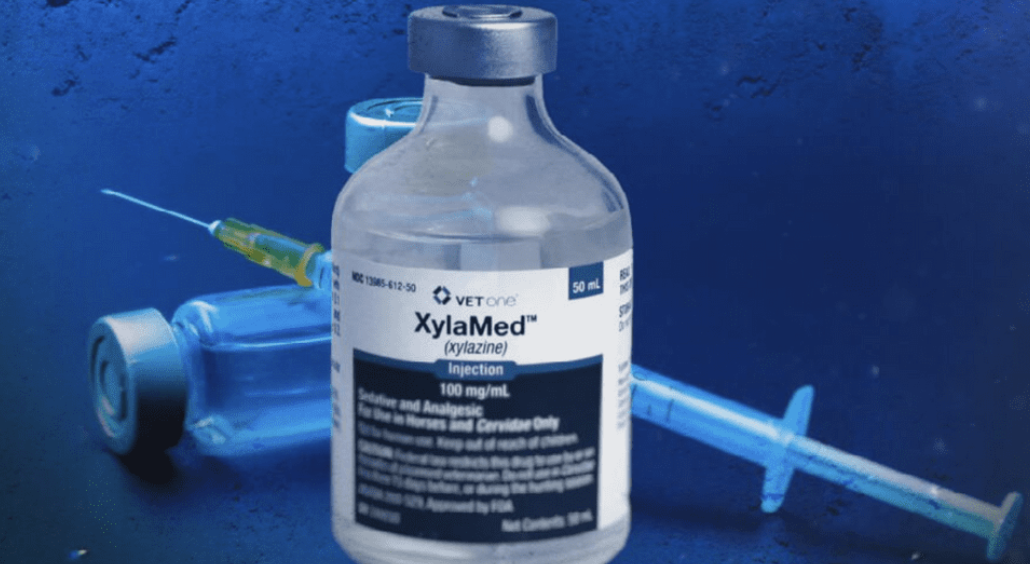Looking into long-term Suboxone use? This article breaks down both the long-term suboxone use benefits and risks. On one hand, Suboxone helps control cravings and supports recovery from opioid addiction. On the other hand, there are concerns like physical dependence and hormonal issues. Read on to find out more about the benefits and risks of long-term Suboxone use.
Key Takeaways
- Long-term Suboxone use can be medically safe but requires continuous medical supervision to manage risks such as physical dependence, liver function issues, and hormonal imbalances.
- Benefits of long-term Suboxone use include improved treatment retention, lower relapse and overdose rates, and stabilization of brain function, all contributing to overall recovery success.
- Tapering off Suboxone should be done gradually under medical guidance to minimize withdrawal symptoms and maintain emotional stability, making ongoing provider consultation essential.
Is long-term Suboxone use safe?
When it comes to treating opioid addiction, Suboxone (a combination of buprenorphine and naloxone) has emerged as a cornerstone medication. But is it safe for long-term use? According to current clinical guidelines and expert consensus, including insights from the Substance Abuse and Mental Health Services Administration (SAMHSA) and the FDA, long-term Suboxone use can be medically safe but requires careful management.
While Suboxone is safer than illicit opioids, concerns about suboxone addiction have prompted close medical oversight to distinguish dependence from misuse. However, there are significant side effects to consider, including hormonal issues, withdrawal symptoms, liver damage with prolonged use, and more common side effects such as nausea, increased sweating, and fatigue.
Severe allergic reactions and breathing difficulties are rare but possible. Thus, ongoing medical supervision is crucial to mitigate these risks while benefiting from Suboxone’s potential to stabilize opioid addiction.

What are the benefits of long-term Suboxone use?
The benefits of long-term Suboxone use cannot be overstated. For many individuals, Suboxone has been a lifeline, significantly lowering the chances of returning to opioid use and enhancing overall quality of life. Suboxone excels in supporting recovery by reducing cravings and withdrawal symptoms, offering a unique advantage over many other treatments.
This section will explore how Suboxone improves retention and reduces relapse risk—and how some clinicians are also exploring suboxone for alcohol use disorder as part of broader recovery strategies.
Improved treatment retention
One of the most notable benefits of long-term Suboxone use is improved treatment retention. Key points include:
- Patients on long-term Suboxone maintenance show better adherence to treatment, leading to significantly improved outcomes compared to those on short-term treatment.
- Higher doses of buprenorphine, such as 24 mg, are associated with better retention rates.
- Suboxone alleviates withdrawal symptoms, helping individuals stay engaged in their recovery.
- It supports consistent attendance in treatment programs.
Moreover, the medication’s ability to diminish cravings allows individuals to focus better on their recovery efforts, resulting in higher retention rates. Patients using Suboxone are more likely to remain in treatment longer compared to those not on medication-assisted therapies, which can improve overall recovery outcomes.

Lower risk of opioid relapse and overdose
Continuous Suboxone use plays a crucial role in maintaining partial opioid agonist receptor stimulation, which helps block opioid cravings and significantly lowers the risk of opioid relapse and overdose. Extended use of Suboxone is linked to a decreased likelihood of relapse and overdose in individuals recovering from opioid use disorder. Compared to full opioid agonists, Suboxone provides relief from withdrawal without producing a euphoric high, which can help in sustaining sobriety.
Combining buprenorphine treatment with counseling and behavioral therapies further enhances its effectiveness in preventing opioid relapse. Key benefits of buprenorphine include:
- Patients on buprenorphine show a reduced likelihood of experiencing respiratory depression compared to those on full opioid agonists.
- The high receptor affinity of buprenorphine helps block the euphoric effects of other opioids.
- This blocking effect is crucial for overdose prevention.
Additionally, Suboxone’s formulation includes buprenorphine naloxone, which serves as an abuse deterrent and helps prevent misuse.
Stabilized brain function and lifestyle
Suboxone’s role in stabilizing brain function and lifestyle is another significant benefit:
- Consistent use of Suboxone helps normalize brain function, leading to improvements in mood and overall health.
- Long-term Suboxone treatment can help stabilize brain function, allowing individuals to lead more structured and productive lives.
- Suboxone normalizes brain chemistry, enabling individuals to manage their recovery more effectively.
The medication also aids in reducing psychological cravings associated with opioid dependence, supporting long-term recovery by providing a stable environment for lifestyle changes. Individuals taking Suboxone often experience improved emotional regulation, contributing to better lifestyle choices. This stabilization enables normalcy in employment, relationships, and daily routines, which is essential for sustained recovery.
What are the risks of long-term Suboxone use?
While the benefits of Suboxone are substantial, it is crucial to understand the risks associated with its long-term use. Long-term Suboxone use can lead to:
- Physical dependence and potential withdrawal symptoms when discontinuing the medication
- Hormonal imbalances
- Liver strain
- Dental problems
The risks of Suboxone use include chronic constipation, hormonal disruptions, and significant dental issues, as noted by the FDA. It is important to weigh these risks against the benefits and manage them through regular medical supervision and appropriate lifestyle adjustments.
Physical dependence and withdrawal symptoms
Physical dependence on Suboxone can develop with long-term use and may result in symptoms associated with suboxone withdrawal if the medication is stopped abruptly. Dependence means that the body has adapted to the medication, and stopping it abruptly can lead to withdrawal symptoms such as nausea, muscle aches, body aches, and insomnia. These symptoms are most intense within the first 72 hours after discontinuation and can last up to a month.
Withdrawal can also manifest emotionally, with anxiety and depression persisting even after physical symptoms subside. Therefore, it is advised to taper off Suboxone under medical supervision to minimize discomfort and ensure a safer transition.
Hormonal and metabolic effects
Long-term Suboxone use can disrupt the hypothalamic-pituitary-adrenal hormonal system, leading to hormonal imbalances. For men, this often means reduced testosterone levels, which can affect mood, energy, and sexual function. Women may experience menstrual irregularities, affecting cycle length and intensity.
These hormonal disruptions can also lead to changes in metabolism, impacting weight and appetite. Some users report changes in libido, possibly due to these hormonal shifts. It is crucial to monitor these effects and consult healthcare providers for appropriate management as the body adjusts.
Dental problems (as per FDA warning)
The FDA has issued warnings about dental issues associated with long-term Suboxone use. These include:
- Poor dental health
- Enamel erosion
- Cavities
- Gum issues
Patients taking Suboxone have reported dental problems beginning as soon as two weeks to up to two years after starting treatment.
Chronic dry mouth, a known side effect of Suboxone, is one of several oral issues explored in our guide on suboxone and oral health, which outlines common risks like enamel erosion and cavities. The acidic nature of sublingual buprenorphine may also erode tooth enamel, increasing the risk of decay and infections.
Frequent dental check-ups and maintaining proper oral hygiene are crucial to mitigating these risks.
Liver function concerns
Long-term Suboxone use can raise concerns about liver health, especially in individuals with pre-existing conditions. The liver metabolizes Suboxone, and while studies show that it does not significantly elevate liver enzymes during the initial six-month treatment period, ongoing monitoring is advised.
Patients with pre-existing liver conditions should inform their healthcare providers, as they may need closer monitoring or adjusted dosages of Suboxone. Regular blood tests are recommended to ensure liver function remains optimal. Under medical supervision, Suboxone is associated with a low risk of liver toxicity.

How long can you stay on Suboxone?
The duration of Suboxone treatment varies widely among individuals. Many addiction professionals address how long you should be on Suboxone, often recommending a minimum of six months to a year, depending on the individual’s progress. Some individuals may require it for just a few months, while others might need it for a year or longer.
Indicators that a patient may be ready to taper off Suboxone include a stable lifestyle, absence of cravings, and a strong support system. Stopping Suboxone treatment should always be discussed with a healthcare provider to ensure a safe and effective tapering process.
The decision to discontinue Suboxone should involve a thorough discussion with a doctor immediately.
Suboxone long-term use vs. short-term use
Comparing long-term and short-term Suboxone use reveals significant differences in outcomes that may vary depending on the treatment approach. Short-term treatment is typically aimed at managing acute opioid withdrawal, while long-term use focuses on preventing relapse in individuals with opioid use disorders. Effective opioid addiction treatment is essential for those struggling with these issues to treat opioid addiction.
Long-term Suboxone use is associated with better treatment retention and lower rates of opioid use relapse compared to longer term treatment.
Effectiveness in preventing relapse
Long-term use of Suboxone has strong evidence supporting its effectiveness in reducing the risk of relapse, especially in individuals with severe opioid dependence. Studies indicate that individuals on long-term Suboxone maintenance therapy exhibit significantly reduced relapse rates compared to those who undergo short-term treatment. Sustained Suboxone use helps maintain tolerance to opioids, reducing vulnerability to overdose after treatment discontinuation.
Patients who undergo medically supervised withdrawal typically experience high relapse rates, indicating the necessity of ongoing treatment to maintain recovery. The risk of opioid overdose is heightened immediately after medically supervised withdrawal, emphasizing the protective role of sustained Suboxone treatment.
Psychosocial stability
Maintaining Suboxone treatment over a long period can enhance psychosocial stability by helping individuals manage cravings and maintain their recovery goals. Long-term Suboxone treatment contributes to improved psychosocial stability, including better social functioning and reduced psychiatric symptoms.
Sustained medication support can help individuals maintain job, housing, and relationships, which are critical components of recovery.
Does long-term Suboxone use cause brain damage?
One of the most pervasive myths about long-term Suboxone use is that it causes brain damage. However, current evidence does not support this claim. While long-term use can lead to emotional numbness and altered emotional states due to suppressed natural dopamine production in the brain, this does not equate to brain damage. The dependency created by Suboxone use can interfere with the brain’s reward system, causing feelings of being stuck or unmotivated, but these effects are reversible upon discontinuation.
It is important to differentiate between the emotional and physical side effects of Suboxone and actual neurotoxicity. Hormonal imbalances due to Suboxone can lead to decreased libido and other physical symptoms for both men and women. Many individuals experience ongoing withdrawal symptoms like anxiety, depression, and fatigue, even after discontinuing Suboxone.
Nonetheless, there is no concrete evidence to suggest that Suboxone causes permanent brain damage.
How to manage long-term Suboxone treatment safely
Managing long-term Suboxone treatment safely involves a combination of clinical best practices, including regular provider evaluations, integration with counseling, appropriate dose adjustments, and lifestyle support. Regular monitoring and lab tests are crucial in catching potential side effects early and managing them effectively. This includes monitoring liver function, hormonal levels, and dental health.
Tapering off Suboxone, if appropriate, should be done gradually and under medical supervision. This personalized approach helps reduce withdrawal symptoms and ensures a smoother transition. Psychological support during the tapering process is crucial to address any emerging cravings or emotional disturbances.
Adhering to these guidelines ensures safe and effective management of long-term Suboxone treatment.
Monitoring and lab tests
Regular monitoring and lab tests are critical components of managing long-term Suboxone treatment. Liver panels should be conducted frequently to ensure that the liver is functioning properly, especially since Suboxone is metabolized in the liver. Hormonal testing is also recommended to monitor any imbalances that could affect mood, energy levels, and overall health.
Oral health checks are equally important due to the increased risk of dental issues associated with Suboxone use. Key health monitoring actions include:
- Regular visits to the dentist to address chronic dry mouth and enamel erosion
- Maintaining proper oral hygiene
- Scheduling blood tests and other clinical evaluations regularly to catch any adverse health outcomes early
- Adjusting treatment plans as needed based on evaluation results
When and how to taper (if appropriate)
Tapering off Suboxone should be a gradual and personalized process, taking into account the individual’s history, response to treatment, and overall stability. A gradual tapering process helps reduce withdrawal symptoms and can be more effective for long-term users of Suboxone. The tapering schedule often ranges from a few days to several weeks, depending on the individual’s adherence to the medication and specific health factors.
Monitoring during the tapering process is essential to address any emerging withdrawal symptoms or cravings promptly. Health professionals might advise a longer taper for those who have been on Suboxone for an extended period to mitigate discomfort.
Psychological support and counseling during this detox phase offer the necessary emotional stability for a successful tapering process.
Should you stay on Suboxone long-term?
Deciding whether to stay on Suboxone long-term is a personal and complex decision. Long-term use of Suboxone is often recommended for those recovering from opioid use disorder to help maintain sustained recovery. Quitting Suboxone can lead to a high risk of relapse and potential overdose due to decreased tolerance to opioids. Patients are advised to stay on Suboxone as needed, sometimes indefinitely, to support their recovery effectively.
Withdrawal symptoms may occur if Suboxone is stopped suddenly, but can be managed through a tapering process. The stigma surrounding long-term Suboxone use can be a barrier for patients, as some believe they should take suboxone indefinitely.
Discussing these factors with a healthcare provider is vital to making an informed decision that best supports long-term recovery goals and helps prevent adverse health care outcomes in public health through personalized treatment.
Bottom Line: Long-term Suboxone use
In summary, long-term Suboxone use offers significant benefits, including improved treatment retention, reduced risk of relapse and overdose, and stabilized brain function and lifestyle. However, it also comes with risks such as physical dependence, hormonal imbalances, and dental issues. Understanding these factors and managing them through regular medical supervision and appropriate lifestyle adjustments is crucial.
Deciding whether to stay on Suboxone long-term should involve a thorough discussion with a healthcare provider. By weighing the benefits and risks and considering individual recovery goals, patients can make informed decisions that support their long-term sobriety and overall well-being.
FAQs about long-term Suboxone use
Can I be on Suboxone for life?
It is possible to be on Suboxone long-term, as this can be beneficial for sustained recovery and relapse prevention. Long-term use is often considered a viable option for maintaining stability in treatment.
Will I ever feel normal off it?
You can expect to eventually feel normal after discontinuing Suboxone, although many individuals experience withdrawal symptoms such as anxiety and depression. These symptoms can be managed effectively with a proper tapering plan.
Does it affect fertility or memory?
Suboxone has the potential to disrupt hormone levels, which may affect fertility, but there is no solid evidence indicating that it impacts memory.
Does long-term Suboxone use cause brain damage?
Current evidence indicates that long-term Suboxone use does not cause brain damage, although it may lead to temporary changes in emotional states. Therefore, it is important to understand that any emotional effects are not permanent.
What are the dental risks?
Dental risks associated with long-term Suboxone use include enamel erosion and the development of cavities. It is crucial to maintain regular dental check-ups and practice proper oral hygiene to mitigate these issues.
















